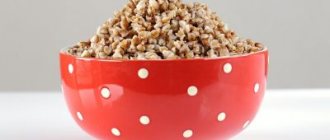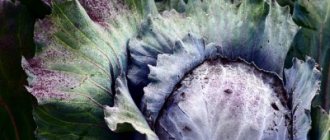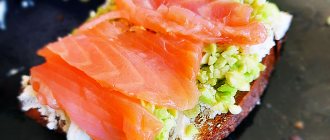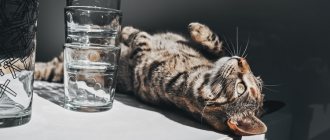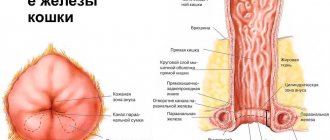Rabbits' intestinal muscles are weak, so they cannot push food through. It is promoted by newly received food, so they eat about 50 times a day. To avoid digestive disorders, you need to properly plan your diet. Therefore, let’s find out how to feed rabbits: what rodents can and cannot eat, and consider an approximate diet for lagomorphs.
Why is a proper diet important for pets?
Active growth and weight gain are undoubtedly directly influenced by rabbit food, optimally balanced and properly prepared at home. It also allows you to minimize financial costs.
Fulfillment of all conditions allows us to ensure that an adult rabbit can produce at least 30 rabbits per year. With proper nutrition, young animals reach marketable weight (3.5-4.5 kg) at the age of 4-5 months.
If the diet is prepared correctly, the female becomes capable of the next conception within 3-5 days after the birth of the cubs. To summarize what has been said, it should be said that rabbits need to be constantly fed, fed, and fed again.
Diet of decorative rabbits
Domestic rabbits should be fed with branches. If you do not keep the animal in a cage, then it will chew furniture in the house, since all rabbits need to have their incisors ground down.
The main diet should consist of grass feed, and in winter, hay.
It is best to feed decorative rabbits with thistle, clover, burdock and dandelion leaves. Add grains and vegetables to your food. You can buy ready-made food to use as an additive to the main diet.
You can give fruits and berries. Your pet should always have water and hay. Do not overfeed the rabbit, as these animals can suffer from obesity, which is detrimental to their health.
What to feed rabbits
Optimally balanced feed allows breeders to achieve active growth of rabbits and rapid achievement of reproductive age.
Types and characteristics of feed
The table below lists rabbit food and its components.
| Name | Components |
| Greens | all kinds of herbs |
| Juicy | root vegetables, fruits |
| Rough | varieties of hay, haylage, chaff, branches, needles |
| Cereals | grains of cereals and legumes |
| Concentrates | vitamin flour, cakes, meal, skimmed milk powder |
| Vitamin-containing | yeast, chalk, flour (herbal, pine, bone, fish), table salt |
It makes sense to consider different types of feed separately, paying attention to their beneficial properties.
Green feed
The following plant families are green foods:
- legumes (peas, alfalfa, sainfoin, etc.);
- cereals (barley, oats, etc.);
- umbelliferous (dill, celery, etc.).
This also includes:
- tops of root crops;
- weeds (dandelion, wheatgrass, etc.).
But yarrow, chicory and wormwood have a detrimental effect on the taste of milk in females, causing bitterness. Cubs often refuse such milk.
Greens have a low calorie content, but are rich in useful components. It is dried before serving.
The table lists the main properties of the various components of green food.
| Type of feed | Properties |
| Grass from the beds | source of vitamins and minerals |
| Cereals from the beds | source of vegetable protein, micro- and macroelements |
| Root tops | well absorbed |
| Celery, dill | improve appetite |
| Dandelion, dill | increase milk secretion |
| Parsley | reduces milk supply |
| Nettle, wheatgrass, sow thistle | source of essential chemical elements and vitamins |
| Wormwood, chicory, yarrow | adds bitterness to milk |
| Henbane, hemlock, lily of the valley, ranunculus, celandine | poison for rabbits |
Feeding rabbits these green herbs must be approached with special responsibility. Rodents should definitely be fed with them during the growing season.
Juicy feed
This food consists of 70-90% water. The most favorite foods for pets are the following:
- potatoes - they contain few vitamins, but a lot of quickly digested starch. This root vegetable should be boiled, and given raw only in the form of peelings, and for “future mothers” it is excluded, i.e. It is not recommended to feed them this food;
- carrots are a source of healthy carotenes, vital for breeding rabbits, pregnant/lactating rabbits and growing rabbits. The daily norm for an adult animal is up to half a kilogram, for young animals - starting from 20-30 grams, increasing the portion to 100 grams;
- pumpkin, like carrots, contains many carotenes. In addition, it is easy to store, which allows you to cut it into small slices and include it in your diet all year round;
- fodder/sugar beets – recommended both fresh and boiled in a volume of 50 g per animal. If it is necessary to increase the portion, you should add hay and feed;
- fodder cabbage – helps improve undercoat growth. Boiled, fresh, pickled will do. The daily dose for adults is up to 400 g, during lactation - up to 600 g. Young animals are not fed so plentifully. Raw cabbage should be fed with restrictions, as it causes gas formation in pets;
- Jerusalem artichoke - “both tops and roots” are suitable for food. It is used as a prophylactic agent in the fight against intestinal parasites in breeding objects;
- silage - legumes, tops from root crops, and meadow grasses are used for its production. A well-made silage should not have a putrid odor or mold, with a neutral acidity level. They begin to feed silage from 3 months of age (up to 50 g), increasing the portion size gradually. For individuals weighing 4 kg – up to 300 g, for “future mothers” – 200 g, during lactation – up to 400 g.
- berries and fruits provoke flatulence in eared animals. Therefore, it is better to eat them yourself and give the rabbits vegetables.
The table shows the properties of succulent feed.
| Name | Properties |
| Potato | presence of starch |
| Carrot | presence of carotenes |
| Pumpkin | presence of carotenes |
| Cabbage | improved undercoat growth, likelihood of bloating |
| Jerusalem artichoke | prevention of intestinal diseases |
| Silage | improvement of intestinal microflora |
| Fruits, berries | Causes bloating |
Roughage
This type of food improves intestinal motility in rabbits. In addition, the digestion of dry plant components increases the body temperature of rodents and activates homeostasis in the body.
When a rabbit eats roughage with appetite, its incisors wear down, which is also beneficial for it. So the animals should be fed with similar products in any case.
The following feeds are considered roughage:
- hay. Legume hay contains much more plant protein than grain hay, making it more nutritious. It is necessary to mow hay before flowering or at the very beginning of flowering and feed the rabbits with already dried product;
- haylage This is also hay, but compressed into briquettes. In addition, it is not dried completely;
- straw. Rabbits, and especially female rabbits, love straw, provided it is clean and well dried. The straw is crushed and molasses or a 1% solution of ordinary salt is poured into it;
- branches. Young branches of different tree and shrub species are used. They are dried and brooms are knitted from them. The animals themselves gnaw off what they like, and the leftovers can be thrown away without regret.
The properties of some types of such food are presented in the table.
| Name | Properties |
| Hay | Very nutritious, but inconvenient to use because it crumbles on the floor |
| Haylage | Helps add variety to your diet |
| Straw | Replenishes fiber deficiency in the body |
| Branches | Help pets grind down their incisors. Increase appetite. Improves the quality of fur and meat. Used for medicinal purposes |
Concentrated feed
Feeding rabbits with concentrates is usually done by large farms that may not have enough time or funds to prepare or purchase natural feed.
The following feeds are most often used (separately or mixed):
- oats - contains up to 70% starch, 10.5% fiber, 8.5% protein and 4-8% fat. Can be fed whole, crushed or flattened;
- corn – the calorie content exceeds oats by 1.35 times. Before serving, it is either crushed or soaked, and occasionally boiled.
Animals should not be fed corn alone.
- wheat bran - contains about 60% non-nitrogenous extractive substance, 13-17% protein, 5-10% cellulose and 3-5% fat. First, the bran is slightly moistened and added to natural feed;
- cakes and meals are by-products of the production of vegetable oils, rich in protein (up to 40%) and fats (10%), contain B vitamins, phosphorus and iron. Before serving, crush or steam. Sunflower, flax, soybean and hemp cakes are used. Cotton seed cake is poisonous for pets. Meals are similar to cakes, but have less fat content;
- acorns are very nutritious; they are given to rabbits in small portions as part of the main food, peeled or dried and crushed;
- combined - there are complete, in the form of granules, and non-complete and are produced in bulk. Complete food can provide your pet with all the necessary nutrients. When using non-complete food, he also needs other food. However, it is important to ensure that there is fresh water in the drinking bowls.
The table shows the properties of concentrated feed.
| Name | Properties |
| Oats | Useful for proper functioning of the gastrointestinal tract |
| Corn | Promotes quick saturation |
| Barley | More nutritious than oats. Well absorbed |
| Wheat bran | Due to the presence of microelements, they normalize metabolism |
| Cake and meal | High calorie content, presence of vitamins and microelements |
| Acorns | Useful for neutralizing feed with a laxative effect |
| Compound feed | Capable of fully satisfying the nutritional needs of rabbits. Allow them to administer medications if necessary. |
Vitamin and mineral supplements
A fully balanced diet for rabbits should certainly include basic vitamin elements, such as:
- A – has a positive effect on the functioning of the nervous and reproductive systems in patients, improves their general physical condition;
- B1 – is responsible for the metabolism of carbohydrates in the body, normalizes the activity of the cardiovascular system, indirectly improves the functioning of the gastrointestinal tract;
- B2 – improves the condition of the skin and fur, optimizes the general physical condition of animals;
- B5 – normalizes the functioning of the digestive system;
- B6 – is responsible for the absorption of proteins and simple proteins, as well as the enzymatic balance in the body;
- B12 – promotes the absorption of proteins, is extremely important for the health of newborn rabbits;
- C – strengthens the immune system and normalizes the functioning of the gastrointestinal tract;
- D – necessary for the proper development of the musculoskeletal system of eared animals, promotes better absorption of minerals;
- E – is responsible for the development of the muscular system of pets. Stabilizes the functioning of the heart and reproductive system;
- K is an essential vitamin for rabbit breeding.
However, vitamin supplements should be used with caution. Hypervitaminosis can provoke deterioration of fur, lethargy, and inflammatory processes.
The following foods contain essential vitamins for eared animals:
- A – grass feed, vegetables, fruits;
- B – dairy products, wheat crops, bran, feed and brewer’s yeast, bone/fish meal;
- C – carrots, rose hips, black currants;
- D – fish oil, dairy products;
- E – vegetable fats, corn, wheat.
If the desired effect cannot be achieved through the use of natural products, they resort to multivitamin preparations.
Calcium and phosphorus are the main elements that ensure the normal development of a pet and its ability to reproduce. The substances used are bone ash and flour, table salt and chalk.
In addition, ready-made formulations containing the necessary components are available for sale, namely:
- Bio-iron;
- Carli mineral block;
- Chica mineral stone;
- Ushastik. A complex preparation containing vitamins.
Basic food
Like all rodents, long-eared animals eat any plant food. Fresh grass or dried tops doesn’t really matter. It is best if food for rabbits is taken from your own garden, since store-bought products may be loaded with chemicals to extend their shelf life. Rabbits especially like beans and all legume plants. This is the main ingredient in the rabbit menu.
In addition to plants, rodent owners should offer their pets other types of food, then the rabbits will grow healthy, cheerful and bring their owners not only joy, but also a good income. How many types of food are there? There are only 4 of them, and all of them must be present on the rabbit menu.
Green feed
Green food is grass, but not all of it. Animals eat best clover, wormwood, nettle, yarrow and tansy. These herbs have medicinal properties, which is also important. The rabbit's body is designed in such a way that it independently senses which grass it needs to eat more and which less. The ideal option is for rabbits to graze on the lawn and get their own food.
Of course, provided you are sure what type of grass grows on the site, you can provide it to animals without any special worries from spring to late autumn. But you will have to stock up on hay for the winter. Preference should be given to legumes, legumes, seeds, and grains. This also includes cabbage of any variety (except red), tops from vegetables. Rabbits especially love to feast on beet tops and Jerusalem artichoke, but these are very sweet, so sugar and fodder beet tops should not exceed 1/3 of the rabbit’s entire lunch portion. Potato tops - 1/4 of the total feed mass. There is a 100% ban on tomato tops.
Rye, clover and lupine can be planted independently in early spring, then the rabbits will be provided with fresh grass for a long time. You should be careful when using wild herbs for food: there is a high chance of accidentally taking poisonous ones along with useful ones. Young grass should be mowed, as it is tastier and healthier.
Together with herbs, twigs and leaves of alder, yarrow, and oak are served on the table. This will strengthen the functioning of the rabbits’ gastrointestinal tract. It is important to remember that they have weak intestines and stomachs; the digestive organs need to be helped to work. Feeding small rabbits beets and their tops is generally prohibited!
Of course, pets also develop their own food preferences. Beets and dandelions are their favorite delicacies. But this does not mean at all that this is the only thing you need to feed them. In no case. You need to create the menu yourself and monitor the health of the animals. If digestive disturbances become noticeable, you should reconsider your diet.
Juicy feed
These are root crops and silage grown in beds. Succulent feed is used more often in winter, when there is no source of nutrients. Juicy foods are less rich in fiber and more rich in vitamins. Mother rabbits are especially useful: they increase the amount of milk for feeding babies, and good feeding of rabbits reduces the risk of death of young animals.
What products are considered succulent foods?
- Cabbage. Rich in vitamins C, E. May cause bloating and fermentation in the gastrointestinal tract. Small portions are the best solution to this problem.
- Beets (any kind, fodder or sugar). Increases metabolism and immunity. It has a weakening effect on the intestines, so it needs to be secured (oak and alder branches are good).
- Pumpkin. The key to a beautiful skin is regular consumption of pumpkin.
- Carrot. Rabbits' favorite food. Red and yellow products should be given. The same applies to cubs: they can be offered carrots from 3 weeks of age, starting from 10-15 years old. In winter, rabbits also eat carrots dried from the summer. It retains a sufficient amount of carotene, vitamins B1, B2, C.
- Potato. It is recommended to boil it before use. Starch is not the most ideal component in the diet of rabbits, since it is difficult to digest, so it is not advisable to give it in its pure form. It is better to mix with other types of feed. Potatoes are quite nutritious, rodents will be full for a long time.
- Silage. You need to cook it yourself or buy it. This is a simple procedure. Silage is mixed in pits or barrels, preferably made of wood. The silage contains beets and other vegetables, tops, and herbs. Everything is mixed, laid, covered with clay. It is necessary to close the hole tightly so that the least amount of oxygen enters the pit or barrel. The silage is ready after 2 months of aging.
A few secrets about silage
- You cannot use potato and beet tops.
- Corn (cobs) and peas (lashes) are very suitable.
- You can add floury paste to the barrel or pit. The process will go faster.
- Good silage cannot smell of mold or rot. High-quality and fresh silage smells like sauerkraut. It is necessary to make sure that the preparations have not rotted: spoiled food will lead to the death of rabbit families.
Roughage
Rough food creates comfortable digestion for rodents. Hay, branches, grass meal, straw are all sources of protein and fiber. Approximately 1/4 of the feed portion is required. Grass is cut for hay in the spring, when it blooms, before the grass becomes coarse or yellow. It is better to choose places for mowing with good soil moisture. These can be the same herbs used for green fodder. The hay must be dried and then stored in dry, well-ventilated areas. Mown grass is best preserved on special wooden flooring at a distance of about 50 cm from the ground.
This will save roughage from rodents. If the hay is poorly preserved, it can be processed to produce good grass meal. It is added to the food in small portions. Drying hay in the bright sun is also a bad idea: vitamins are lost, and rabbits eat such a product without much pleasure. Tree branches are good for rabbits' digestion. These can be branches of oak, alder, acacia, linden. It is possible to use branches of bushes: raspberries.
Ledum, elderberry, bird cherry, apricot are poison for rabbits. It is strictly forbidden to use such branches when feeding. It is very convenient to store branches in winter, right in the snow. As a result, they do not lose their beneficial substances. You need to harvest in June, tying brooms and hanging them in a dry place. It is not recommended to store and dry branches in the sun. Juniper, spruce and pine branches are very fond of eared ones. Straw is prepared from oats and millet.
Concentrated feed
This is compound feed. Contains a large amount of protein. Eating mixed feed ensures that rabbits gain body weight. Concentrated feed is 1/3 of the diet. For rabbits, compound feed is suitable, which is used for feeding piglets and calves. There is a special dry granulated food for eared animals. It is very comfortable. There is no need to add anything to it, unless there is a female feeding the baby. She needs to add grain to her diet: without it, lactation can be scanty.
This type of food contains cereals. First of all, oats, they can be used whole or crushed; they have a good effect on intestinal function. Despite its nutritional value, it does not cause obesity. Corn also makes up a significant share in concentrated feed. Rabbits also eat corn porridge very well, especially small rabbits. Barley and wheat are germinated before being given to animals. This food causes fermentation. You can eat it no more than 4 days in a row. Wheat bran and cake are also perfect for feeding. This is food industry waste.
What not to feed rabbits
The table below provides a list of what you still cannot and absolutely should not feed rabbits under any circumstances:
| Name | Components | Consequences |
| Green | Herbs: henbane, lily of the valley, buttercup, spurge, cress, celandine, etc. | Disorders of various body functions, including death |
| Juicy | Fresh cabbage and potatoes, large quantities of legumes | Gastrointestinal dysfunction, bloating |
| Rude | Branches of wild rosemary, elderberry, wolfberry, lilac, bird cherry, stone fruit trees | Disorders of various body systems, including kidney problems |
| Concentrated | Poor quality and expired food | The most different and unpredictable |
In addition, the following foods should not be given:
- any human food;
- mushrooms;
- lots of grain products;
- lots of dairy products;
- rice;
- alcohol.
Conditionally permitted and prohibited foods
Rabbits are omnivores, but are sensitive to the quality of the food they eat. Even among the usual vegetables, cereals and herbs, there are some that can negatively affect their health.
A list of conditionally acceptable and unauthorized food for animals is presented below.
Table: permitted and prohibited foods for rabbits
| Name | Innings |
| Oats | Feed in natural or ground form. |
| Corn | Pre-soak in water or crush. Sometimes they cook porridge and mix it with other food. |
| Barley | In crushed or flattened form. |
| Wheat | Mixed with roughage and succulent feed, grass. |
| Compound feed | Sold in the form of granules or in bulk. It is often combined with vitamin and mineral supplements and medications. Complementary feeding leads to rapid weight gain - up to 40 g per day. More suitable for feeding rabbit offspring up to 3 months and animals going to slaughter. Adults are given it in combination with greenfinch and succulent feed mixtures. Always have water available. |
| Pulp, meal | The following cakes are used: soybean, flaxseed, sunflower, beet and hemp. Meal made from flax, sunflower and soybean is suitable. Served steamed or in combination with mixed feed or potatoes. |
| Acorns | They come in pressed briquettes, which are soaked in water in advance. |
| Give with restrictions | Can't give |
|
|
Animals have some peculiarities in terms of digestion. They have a weak stomach, so food must always be present in it. To prevent problems with the digestive system, it is unacceptable to keep rabbits hungry. Over-salted and acidic foods are contraindicated for animals. Freshly cut grass causes bloating, so you don’t give it right away, but let it dry in the sun. It is unacceptable to feed dirty root vegetables.
How to feed rabbits
Any diet for rabbits carries with it the task of ensuring the pet is healthy, gains marketable weight, has an attractive appearance and fertility.
Features of feeding and diet
Medium- and large-sized rabbit breeds require the most varied diet, including the entire range of feeds.
What to feed in winter
For the cold, winter period of the year, I have my own norms and portions, which are given in the table below (per animal per day, g):
| Juicy | Hay | Concentrates | |
| Rabbits in a state of physiological rest | 150 — 200 | 120 — 150 | 50 — 60 |
| In preparation for mating | 150 — 200 | 150 — 200 | 90 — 100 |
| Pregnant female | 200 — 250 | 150 — 200 | 70 — 90 |
| Female during lactation | 300 — 600 | 200 — 250 | 140 — 160 |
What to feed in spring
The spring period is a transitional period, and long-eared animals should be gradually transferred to summer mode. Feeding standards for raised rabbits are determined individually and depend on the weather and the level of activity of the animals.
In cold weather, rodents should be fed higher-calorie foods (vegetables, legumes); in warm weather, they should be fed lighter and more quickly digestible foods.
When the animal is active, it needs to be fed abundantly and, if possible, varied.
What to feed in summer
During the warm summer period of the year, the following feeding rates are suitable (per animal per day, g):
| Greens | Concentrates | |
| Rabbits in a state of physiological rest | 400-500 | 40-50 |
| In preparation for mating | 550-700 | 70-90 |
| Pregnant female | 200-250 | 70-90 |
| Female during lactation | 1000-1200 | 120-150 |
What to feed during the rest period
A passive and undisturbed rabbit does not need to be fed as much as in other conditions. Recommended standards and calculations are given in the tables above.
It only remains to note that excess food in a pet in a state of physiological rest can lead to a condition such as obesity and the following unpleasant consequences:
- male rabbits lose interest in mating;
- decreased sperm quality among producers;
- Female rabbits often experience miscarriages and stillbirths.
What to feed for rapid growth and weight gain
Obviously, to achieve all this, high-calorie foods are required, which rabbits eat with pleasure.
To obtain the desired result, you need to add the following components to the main diet:
- corn cobs, boiled potatoes, tomatoes and cucumbers;
- vegetable tops, except tomato and potato;
- wheat bran;
- sunflower, flax, soybean and meal cakes.
To improve the taste of animal meat, you can additionally feed them bread, cereals, and potato peelings. It is useful to dilute crackers and cereals with milk.
You may like the article about rabbit breeds.
Fur breed nutrition
The main goal of growing such breeds is to obtain thick and warm fluff. Since obtaining fluff of proper quality requires a higher content of amino acids in the feed, all volumes are increased by 20-25%.
How many times a day should rabbits be fed?
According to experts, a rabbit is capable of eating from 30 to 80 times 7/24. At the same time, it is recommended to feed it in farms twice a day, and for home breeding - three times.
It is better to feed at certain times, for example: in summer - at 6, 15 and 19 o'clock, in winter - at 8, 12 and 17 o'clock.
How much and when to give water
Usually, for rodents, the water in the drinking bowl is changed in the morning and evening, but if the air temperature in the summer goes through the roof, then it should be topped up again - during the day.
An adult animal's water consumption ranges from 60 to 130 ml per 1 kg of weight, although a female rabbit can drink more - 250-350 ml/kg.
It must be remembered that when feeding pelleted feed, water consumption increases significantly.
Use of vitamin and mineral supplements during feeding
If the menu is made up of simple and natural products (grains, herbs, vegetables), you cannot do without additional vitamins and minerals. As a mineral supplement for strong bones and teeth, you can give chalk to rabbits by adding it directly to the grain mixture. Instead, they use pieces of limestone, which are simply placed in the cage. Animals are also offered the following as a source of minerals:
- pieces of charcoal;
- clay or expanded clay;
- turf cut from a field.
A mandatory component of the daily menu is table salt. The daily norm is 3–5 g per animal. Excess salt can lead to pet poisoning.
In winter, it is useful to give animals complex vitamins . Water-soluble compounds are used ( Chiktonik, Tetrahydrovit), which are added to drinking water. The course of supplementation with vitamins is 3–6 days, monthly.
Chiktonik
Tetrahydrovit
Nutrition rules for breeding eared animals
Depending on the physiological state of the animals, both the composition of the diet and its quantity change.
At different periods of the animal’s life cycle, the rabbit breeder must provide and organize feeding that corresponds to the physiological phase.
Tables with the relevant standards are described above.
Feeding in summer
Feeding in winter
Diet during preparation for mating
As mentioned above, animal feeding during such a crucial period must be increased. It is advisable to provide them with succulent feed/hay/concentrates - 150-200/150-200/90-100, respectively (in grams).
Feeding pregnant and lactating rabbits
Feeding a pregnant or lactating rabbit requires an even greater increase in the number of servings. Portions of succulent food are increased to 200-250 g, the same amount of hay is left, and the dose of concentrates is reduced to 70-90 g.
Diet with dairy products
Born and growing rabbits get milk from their mother. If a female rabbit dies for some reason, the rabbit breeder must select the optimal milk formula to feed the orphans.
The following are used as a rabbit milk substitute:
- goat or cow's milk;
- factory-produced milk formula for rabbits or kittens.
It is most convenient to feed babies with a pacifier, a large syringe or pipette, or a special feeding device from a pet store.
Milk as such is even harmful to adult animals. Firstly, the animal does not feel the need for this. Secondly, adults, like humans, are not able to digest lactose and milk protein.
Features and rules of feeding young rabbits
The life of a little rabbit consists of four stages, during which its nutritional needs gradually change.
- From birth until two weeks of age, baby rabbits need mother's milk;
- In the period from 2 to 3 weeks, a couple of times a week, the baby rabbits can be fed with dry mixtures from dried grass;
- A month-old animal is already able to eat more solid food. Although 20% of the diet should still be milk. The remaining 80% is all kinds of mash, grass, hay;
- Two-month-olds are separated from their mother and offered dry food, bran, hay, grass, and some vegetables.
What to give in winter
What not to feed rabbits
In winter, the body of any living creature requires more vitamins and other useful substances, because it is during this period that they are in short supply. Therefore, with the arrival of cold weather, rabbit breeders must take care of the nutritional value of the feed that is added to the mash. It is important to maintain an optimal diet during cold weather. The amount of food that should be given to rabbits in winter depends on the age, gender and well-being of the animal.
Important! In cold weather, long-eared animals can also be fed with waste. For example, meal, cake, dry pulp, as well as bran and malt sprouts are suitable.
What to feed domestic rabbits
Pets, unlike their wild relatives and those who live on farms, require special care and their own feeding rules.
Diet of decorative pets
The cutest, cutest, active and playful creature is the decorative rabbit.
The table below details a varied diet for rabbits living at home.
| Name | Components |
| Juicy food | White cabbage (a little), zucchini, potatoes (mixed), carrots, pumpkin, beets |
| Green food | Root tops, corn leaves, sprouted oats, certain types of grass, green shoots of legumes (a little) |
| Roughage | Bark, branches of trees and shrubs, grain, grass meal, dried herbs, straw and hay |
| Concentrated feed | Purchased at pet stores |
What not to give to decorative pets
A list of most food products that are harmful and dangerous for such breeds, as well as the possible consequences of their consumption, are collected in the table.
| Name | Consequences |
| Table scraps | Gastrointestinal disorders |
| Dog and cat food | Indigestion |
| Poisonous plants | Poisoning, death |
| Branches of fruit plants | Gastrointestinal tract dysfunction |
| Onions, garlic, mushrooms | Poisoning |
| Dairy products, stale food | Gastrointestinal tract dysfunction |
Seasonal diet
The summer menu for rabbits should consist mainly of succulent and plant food. The rabbits' morning meal should consist of half concentrates and one third plant food.
- During the day, only grass should be given; the evening meal should consist of half concentrates and one third grass feed and branches.
- The winter diet for feeding rabbits should be rich in vitamins and be filling and nutritious.
- The proportion of concentrates should be greater. In addition, the diet includes silage and winter vegetables.
The morning meal should consist of hay and concentrates, in the afternoon you should give succulent food, and in the evening the same as in the morning plus branches.
How to prepare food
It is better to prepare some types of food for rabbits in advance so that the necessary food or its components are at hand at the right time.
How to make mash
Mash is a treat for rodents. The most popular recipe includes the following ingredients:
- boiled potatoes in their jackets – 1 kg;
- carrots – 1 kg;
- oats – 500 g;
- sprouted wheat – 500 g;
- table salt – 2 teaspoons;
- bran – 300 g;
- chopped hay - 2 handfuls.
Prepared using a blender or other chopper. Animals eat mash better not in the form of porridge, but in the form of cutlets.
How to make silage at home
The best silage is made from melons (without tops), cabbage, corn, young sunflower stalks, potato and tomato tops, soybeans, vetch, root vegetables with tops and various herbs, except nettles.
The technology for making silage for rabbits yourself is as follows.
The ingredients are crushed to fragments no more than 1 cm in length. The resulting mass is placed in a barrel, preferably immediately.
The capacity of the barrel depends on how many rabbits will consume the silage during the time during which it will retain its beneficial properties. If there are not very many rabbits, a 100 liter barrel will do. The maximum capacity of the barrel is 300 liters.
It is recommended to cover the mass with a 5 cm thick layer of sawdust from non-resinous wood. Then it is necessary to seal it. The barrel is covered with clay.
During the ripening process, the silage is monitored to see if any cracks have appeared. If they occur, covering with clay is necessary.
In addition to classical silage, fermentation is used. The finely chopped green mass is placed in a barrel, sprinkling each layer with table salt.
The resulting substrate is compacted until the juice appears and pressed down with a wooden circle, on which a load is placed on top.
During the silage maturation process, the barrels are stored in a moderately warm place and then removed to a cool room.
What do rabbits eat at home: vitamins, minerals
It is extremely important for these animals to receive sufficient amounts of vitamins, especially during cold periods. Fish oil is very important for them, which is dosed as follows:
- for babies - 0.5 g per individual;
- for an adult animal - 1.5 g;
- for pregnant and lactating females - 3 g.
Culinary yeast and hay are rich in vitamin E, and it is also found in sprouted grains. And from ordinary chalk, an animal can get a sufficient amount of calcium.
Table salt is very important for animals, which must be given to them in the following ratio:
- babies - 0.5-1 g;
- adults - 1.5 g;
- lactating females - 3 gr.
Effective fattening of rabbits
In order to obtain dietary meat in a short time, it is necessary to take 4-month-old young animals or adults for fattening within a month. In the first ten days after the start of intensive feeding of the animals, the supply of hay is reduced, compensating for it with concentrates.
In the next decade, feed is added that promotes fat growth: barley, oats, corn grain, boiled potatoes with bran. In the last ten days of fattening, they are fed ad libitum so that the animals eat the largest amount of food. Rough food is practically excluded. The main component of the diet is concentrates, but their composition should be changed more often.
Are there predatory rabbits in the wild?
We have established that the domestic rabbit cannot eat meat. What about wildlife? Animals that live untamed are sometimes forced to act beyond the norm to stay alive.
This does not apply to rabbits, but does apply to specific breeds of hares. Rabbits and hares are different animals belonging to the same family of mammals. This means that they are completely separate species.
Snowshoe hares are an example of carnivorous lagomorphs. They will still eat plants if possible. However, as their name suggests, snowshoe hares live in cold climates. If there is no greenery, they will eat animals to survive.
Snowshoes have long been observed feeding on animal carcasses during the winter. These are usually the corpses of small animals, such as birds.
But snowshoe hares are not picky. They will eat the body of a lynx, their main predator, if they encounter one.
It appears that this breed of hare has evolved to become a meat eater. The protein provided keeps them alive during the harsh winter. However, they do not actively hunt prey. Snowshoe hares are strict scavengers.
This is because their teeth are not strong enough to separate the meat from the bone. They leave it to other wild predators. The hare will then feast on the remaining remains.
The best food from manufacturers
Today there are a large number of products on the rabbit food market, but the most popular are the following products:
- “Multigane” for rabbits - the company produces complete, balanced food concentrates based exclusively on natural compounds. The company's products do not contain harmful hormones and antibiotics, therefore they 100% meet modern environmental requirements, while containing all the necessary substances for productive breeds. This food has one of the best price/quality ratios due to the presence in its composition of the optimal amount of vitamins, micro- and macroelements, as well as energy compounds useful for gaining weight.
- Feed&Life PC 92-1/24 is a complex of balanced feed that meets premium standards. They are rich in both vitamins and amino acids necessary for optimal body development. The main distinguishing quality of the company is the development of highly targeted products needed during certain periods of an animal’s life. That is why Feed&Life products satisfy all production needs when raising fur-bearing animals.
- Purina, universal food for rabbits - non-professional extruded food for small and medium-sized farms. It contains all the most important components for the development of animals from birth to maturity. The main highlight of the product is the maximum complete content of nutrients, so the use of food makes it possible to refuse other additives, including vitamin preparations.
- PROVIMI for rabbits - the supplement is based on natural ingredients selected according to the principle of the highest biological susceptibility. That is why even a small amount of this product in the diet of animals makes it possible to improve their immunity, as well as increase the productivity of the farm. In addition, it contains only high-quality plant compounds, so this food can provide rabbits with the healthiest diet possible.
- BNL Grain Free rabbit — grain-free food for animals of all ages. It consists of granular components, the basis of which are field and meadow grasses. Most often, such products are used in winter in all kinds of dry mash. They make it possible to completely eliminate the rabbits’ deficiency in green grass, which helps increase immunity and digestibility of other foods.
Use of veterinary drugs
Both for those who are learning for the first time what to feed a domestic rabbit, and for experienced rabbit breeders, it is useful to know that:
- Timely prevention of coccidiosis helps prevent the development of inflammation and destruction of the intestinal mucosa, which helps to avoid growth retardation in young animals.
- The use of the drug “vetom” improves the functioning of the digestive system and improves immunity.
- To improve the ratio of calcium and phosphorus, stimulate metabolic processes and improve liver function, “catozal” is used. It can be used either in injection form (which is more effective) or given orally (with water or food).
- To increase weight gain, significantly improve the quality of skin and coat, for show animals, the use of the drug “nucleopeptide” is very effective.
A high-quality and balanced diet is the basis for the health of the animal, as well as the peace and well-being of its owner.
Rabbit feeding regimen
When choosing what to feed rabbits, you need to take into account that not only the diet is important, but also the feeding regimen. Fluffy animals eat little by little, but often. They can go to their feeders more than 30 times a day. It is advisable to feed them at the same time. In this case, they will produce gastric juice at the time of feeding. Thanks to this, animals grow faster and develop more quickly.
Adult rabbits need to be fed 2-3 times a day. Nursing rabbits and their babies need to be fed 4 times a day. You can adhere to the following regime:
- With three feedings a day in the winter season:
- 8 a.m. – give half the norm of concentrated feed and hay;
- 12 hours – give succulent food;
- 17 hours - give half the norm of concentrated feed and the same amount of roughage in the form of branches and hay.
- With three feedings a day in the summer:
- 6 hours – combine half the norm of concentrated feed with 1/3 of grass;
- 15 hours you can give rabbits 1/3 of the norm of green food;
- 19 hours you can give half the norm of concentrated and 1/3 of green feed in addition to roughage.
- With four feedings a day in the winter season:
- 6 hours – give the rabbits 1/3 of the concentrated feed and ¼ of the hay;
- 11 hours – you can add another half of the norm of succulent feed to 1/3 of the concentrates;
- 16 hours – give ½ of the hay and the other half of the norm of succulent feed;
- 19 hours – give 1/3 of the concentrates and ¼ of the hay. Before going to bed, you can feed the branches.
- With four meals a day in summer:
- 6 hours - you need to dispense a third of the concentrates and ¼ of the herb;
- 11 o’clock – you can give the same part of the concentrated feed and the same amount of green;
- 16 hours – you can give only half the amount of grass;
- 19 hours – you should feed the rest of the concentrates and ¼ of the green feed, as well as branches.
This is just a sample feeding schedule. You need to create your own time schedule, taking into account the available feed. The main thing is to learn to stick to one feeding time and give a variety of foods.
The digestive tract of rabbits: mistakes of novice farmers
A feature of the digestive tract of animals is the weak muscular walls of the stomach. It is necessary to ensure that the stomach is systematically filled with food and the required amount of water, so that the absorbed food can move into the small intestine, where the food is broken down into amino acids and sugar, and then enters the large intestine, where excess moisture is absorbed into the rabbit’s body.
Therefore, it is necessary to provide the animals with frequent feeding, because they eat about 40 times a day, but in fractional doses. Provide them with clean water and food (the manger should be constantly filled with hay).
Pets are rodents; they must grind down their incisors, which grow throughout their lives. They are provided with food rich in fiber to satisfy the natural need for teeth grinding. The presence of tree branches in the cells will help satisfy the need for frequent meals, enrich the diet with fiber and sharpen the incisors.
The animals are known for their cleanliness; they are wary of spoiled food and will not eat it. If a rabbit inadvertently eats such food, it will result in indigestion for him.
Many novice rabbit breeders are alarmed by another feature of long-eared rabbits - coprophagy (eating droppings). There is no need to immediately clean the animal’s mouth, or assume that the food is of poor quality. This process is vitally important, because in this way difficult-to-digest foods are digested, and the body receives fiber and useful components.
In the cecum of animals, under the influence of bacteria, hay and grass are processed, and subsequently useful substances are excreted along with the droppings. If you prevent eating night droppings, the animals will grow slower, and if you decide to feed the animals, they will stop eating excrement, but will become weaker from disease.
Sometimes animals exhibit the ability to control the amount of food consumed. During lactation, the female eats 4 times more than during rest. The gastrointestinal tract of a female rabbit can change in volume up to 30%.
Features of feeding rabbits
When feeding baby rabbits you need to be more careful. For the first 10–15 days they feed only on their mother's milk. Moreover, this period is considered the most critical and is characterized by high animal mortality. The cause of this may be indigestion or stress.
It is important that the mother eats well, with whose milk the rabbits will receive all the vitamins and minerals necessary for growth.
At the moment when rabbits begin to eat food, their digestive system is still poorly developed. That is why they need to be given easily digestible and highly nutritious foods.
Do not feed baby rabbits young green grass. It should be dried.
You can give bean and legume-cereal hay, as well as oats and wheat bran in small quantities. Concentrated food is also suitable, but it must first be flattened or crushed. You can give your babies bone or fish meal as animal feed.
New foods should be introduced gradually into the diet of baby rabbits. It is necessary to give them test small doses and see how they feel.
Rabbits can be separated from their mother at 1.5 months of age. Young rabbits can be stressed during laying. In order to cope with it, you can add vitamin B to the water. 50 mg per 1 liter of liquid will be enough. Additionally, you can give chamomile, chicory, burdock and twig food. At 2 months, rabbits can consume 80–110 g of feed and hay. You should add root vegetables and other succulent foods to your diet. As they grow older, a greater variety of foods can be introduced into the diet.

